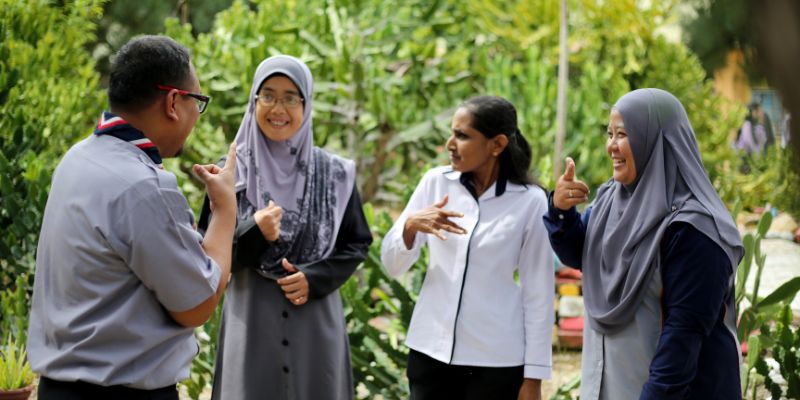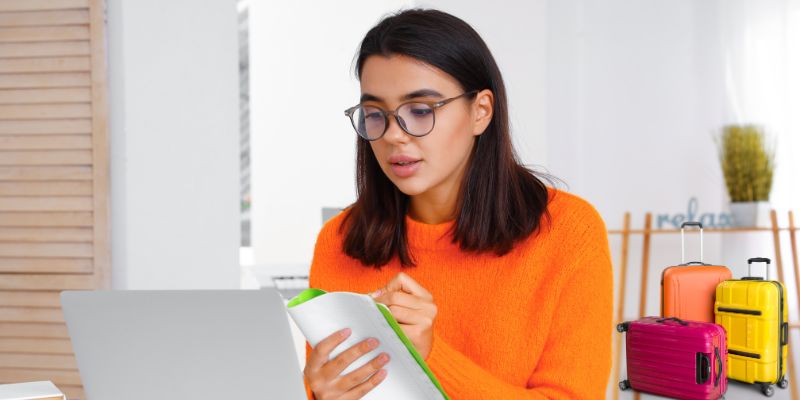Have you ever struggled to order food or ask for directions because of a language barrier? Language differences can hinder your travel experience but shouldn't stop you from exploring. Luckily, there are apps and methods to help you communicate effectively and enjoy your journey. Let’s dive into them!
Have you ever struggled to order food or ask for directions because of a language barrier? Language differences can hinder your travel experience but shouldn't stop you from exploring. Luckily, there are apps and methods to help you communicate effectively and enjoy your journey. Let’s dive into them!
1. Learn Basic Phrases Before You Go
A few essential phrases in the local language will make a difference, even if you cannot master speaking in a new language immediately. But you will easily manage daily situations by knowing essential words such as hello, thank you, please, excuse me, and how much.
You should learn essential phrases for food orders, ask for directions and use polite dialogue if you have enough time. People who live in that area recognize your efforts because this creates positive and pleasant interactions between you.
Several excellent language-learning apps you can use include:
1.Duolingo provides beginners with an exciting platform through interactive gameplay to learn languages.
2.Memrise enables users to learn practical phrases by watching audio and videos of native speakers.
3.Pimsleur dedicates its program to teaching users conversational speaking and listening skills.
2. Use Translation Apps to Bridge the Gap
Through technological advances, we now have much better solutions to break down communication barriers. Travelers depend on Google Translate because it enables text and voice translation with camera functions to convert menus, signs, and documents. This application automatically helps you type and translate messages into the targeted language.
The useful translation apps include:
1.iTranslate: It offers voice translation and offline support.
2.SayHi: It is best for instant speech-to-speech translation.
3.Microsoft Translator: It is excellent for group conversations and text translation.
Download the required language before leaving home so you can use it without the internet.
3. Use Body Language and Gestures
Your body language functions as your most reliable tool when verbal communication fails. The simple act of smiling, nodding, and pointing with fingers at menu items successfully conveys your message to others.
Hand gestures are very helpful in communication, but you must understand that different cultures give different meanings to the same hand movements. For example, specific hand movements can be acceptable in one country but offensive in another.
For instance:
1.In Japan, bowing down shows respect.
2.In Italy, hand gestures are part of everyday communication.
3.In Thailand, pressing your hands together in a "wai" greeting signifies politeness.
Pay attention to the body language of local people because this will show you which methods work best.

4. Carry a Phrasebook or Flashcards
Old-school methods still work! Phrasebooks provide essential phrases that may be helpful when your phone power runs out, or internet connectivity fails. Travelers often use flashcards to show pictures and phrases during communication.
A toilet picture on your card helps you request a restroom, while an allergy card translated into the local language supports dining activities. Basic tools effectively prevent misunderstandings and improve communication flow.
5. Speak Slowly and Clearly
When speaking English to residents in foreign areas, you should maintain easy-to-understand statements and avoid slang, complex phrases, and idioms. Use simple vocabulary while delivering your message using clear and direct speech. Many individuals understand basic English but face problems with fast speech patterns and foreign pronunciation.
When you need directions to the train station, you might say, "Train station?" or "Where is it?" instead of the direct question, "Hey, are you familiar with the nearest train station?" This enables speakers of different languages to understand the information more easily.

6. Find a Local Guide or Translator
When language represents your main challenge, you can hire a bilingual guide who understands the native language of that area and your language. They will assist you in understanding both cultural aspects, translate the conversation, and offer guidance about the destination.
An affordable solution is to approach language exchange meetups where you can practice English with the assistance of local people.
7. Use Visual Communication
Visual communication helps when words fail to communicate. For navigation, you can photograph key locations, write down essential addresses in their local language, or point at your destination through maps.
For example:
1.Show the image of a menu item to the staff when ordering a particular dish at a restaurant.
2.Use a map to demonstrate the location where you want to go.
3.You should carry key phrases in written form in both languages as a reference.
Short communication techniques enable users to exchange essential messages without complete language proficiency.
8. Embrace the Challenge and Have Fun
Stepping outside your comfort zone is the best travel adventure. Language barriers will bring adventure to your trip, so welcome them with excitement rather than frustration. Learn new words and phrases patiently and respectfully, and accept miscommunications with a smile.
Your communication may not be perfect, but your efforts to speak out will be appreciated by most people and help you with their best abilities. Travel experiences become stress-free and enjoyable whenever you maintain a positive attitude.
Language Should Never Hold You Back!
The experience of visiting a country with an unknown language provides an exciting challenge only if travellers adopt the right strategies. Multiple techniques exist to bypass language barriers, including using translation applications, memorizing basic phrases with nonverbal communication methods, and other creative methods of exchanging information. These solutions make overcoming language differences possible.
Your travel plans should not limit you because of language fears when you have the opportunity to explore new cultures. You can meet extraordinary people while creating unforgettable memories. Travel connects us to people, while simple smiles initiate meaningful conversations, so don't worry about the language barrier and start your trip to a new country.
- Share this article:
-
![Switzerland: A Traveler's Dream Destination]() Travel
Travel - Switzerland: A Traveler's Dream DestinationHave you ever dreamed of standing on top of a snowy mountain? Or you can imagine being in charming villages with fantastic views. If yes, your dreamy destination is Switzerland, which offers impressive natural scenery, exciting activities, and cultural treasures.
-
![From Tokyo To Kyoto: A Two-Week Itinerary For The Best Of Japan]() Travel
Travel - From Tokyo To Kyoto: A Two-Week Itinerary For The Best Of JapanHave you ever wished to stroll through Tokyo's neon-lit streets? Or have you dreamed of exploring temples in Kyoto and relaxing in an onsen hot spring with stunning mountain views? Japan offers an extraordinary travel experience that combines established traditions with its innovative modern culture. Making the most of your trip becomes challenging since Japan has many remarkable destinations.








